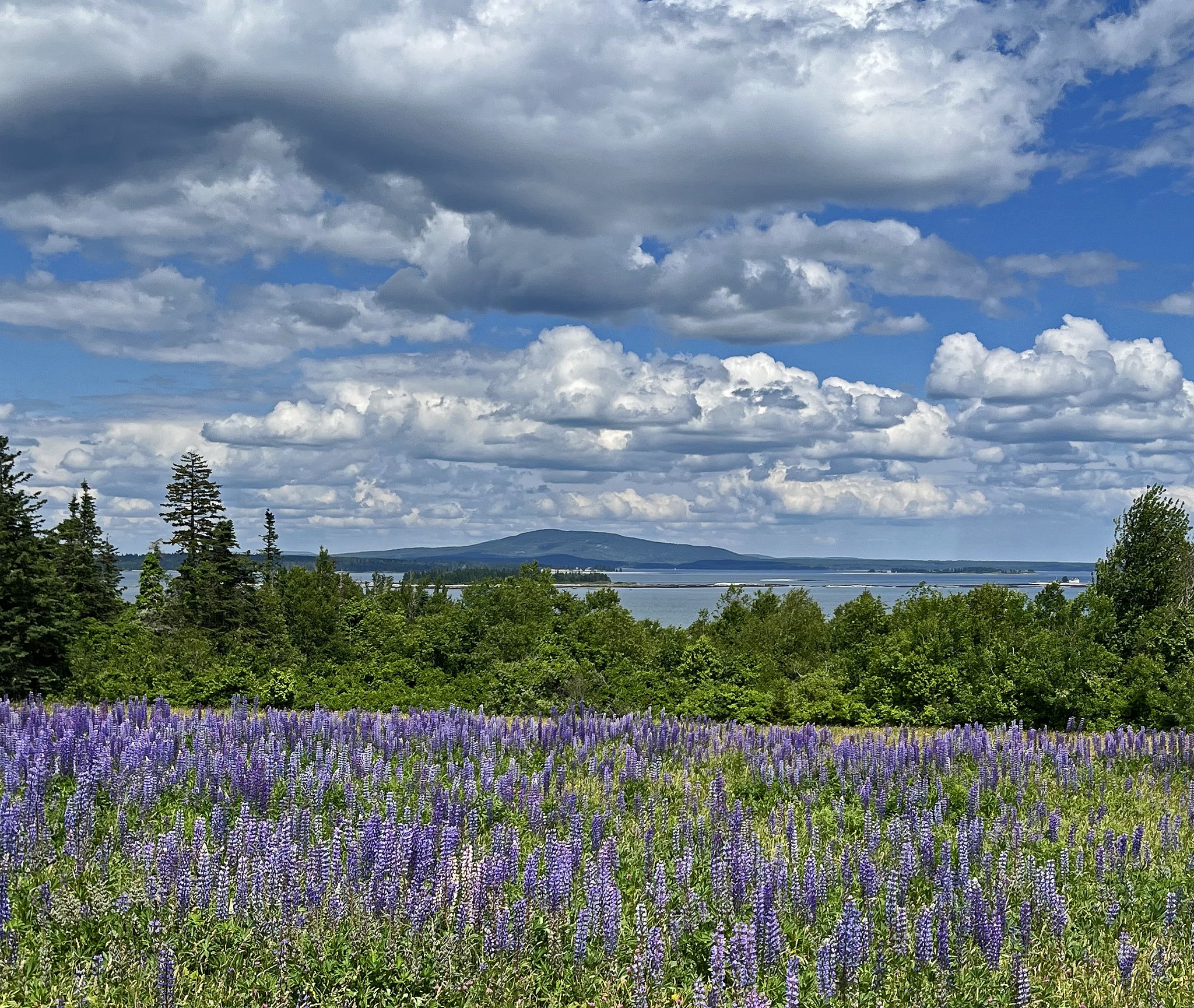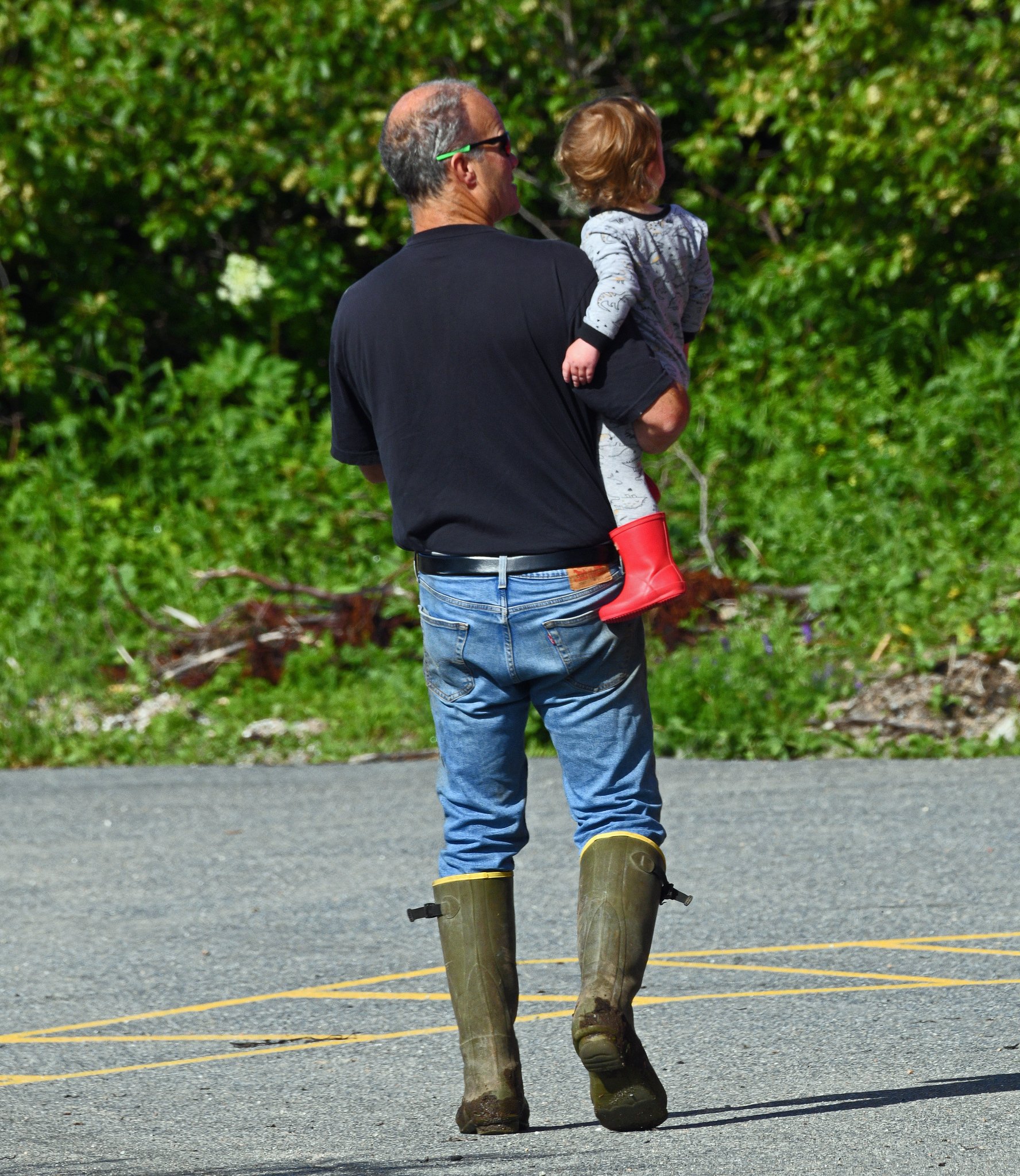Here you see the 90-foot American Eagle in Great Cove at dawn yesterday after overnighting there. She’s a high-riding, fast schooner with very clean lines.
This was her second visit to the Cove this year. She departed dramatically about 11:30 a.m. yesterday by wending her way through a WoodenBoat School sailing class of 12 ½-footers:
The Eagle is on a four-night trip that will include a windjammer fleet get-together on July 4 and participation in Maine’s annual Great Schooner Race in Rockland (her home port) on July 5, according to her schedule. “Last year,” her website modestly reports, “we won not only our class but the overall race! We’ll try to repeat that this season ….” Good Luck Eagle. (Images taken in Brooklin, Maine, on July 2, 2024.)























































































































































